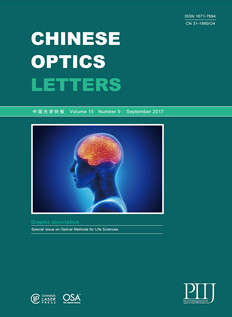- Special Issue
- Optical Methods for Life Sciences
- 3 Article (s)
- Publication Date: Sep. 10, 2017
- Vol. 15, Issue 9, 090601 (2017)
- Publication Date: Sep. 10, 2017
- Vol. 15, Issue 9, 090602 (2017)
- Publication Date: Sep. 10, 2017
- Vol. 15, Issue 9, 090603 (2017)
Chinese Optics Letters (COL) invites original manuscript submissions for a Special Issue on Optical Methods for Life Sciences to be published in September 2017. This issue will focus on the cutting-edge optical techniques and its applications to brain sciences and immunology. Understanding the brain’s function and brain diseases has long been quested. Brain’s function depends on neuronal networks and therefore from a systems biology perspective, should be studied not only at the neuron level,but also at the neuronal networks and system levels. Optical imaging can be applied at multiple levels from gene to molecular, from cellular to tissue and from organ to system levels to yield critical information bridging molecular structure and physiological function. Along with the brain research, immunology attracts many researchers’ interest. Optical methods enable visualizing cellular and molecular events dynamically and thus serve as ideal tools for studying immune activities in vivo.







